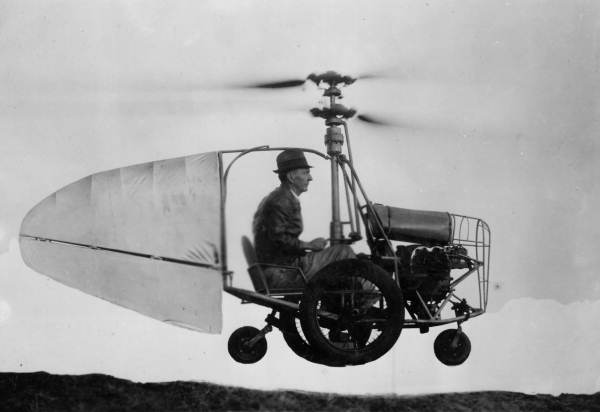The hurdles--and advantages--of designing flying cars


We've covered the promise of so-called "flying cars" on SmartPlanet before and at length, and now, one of the more high-profile, contemporary examples, the Terrafugia Transition, is actually scheduled for deliveries this year. A new report in The Economist says that 100 of these $279,000 vehicles, which run on gas and have wings that fold up neatly when driven on the ground, have been reserved.
As the Transition hits the market--and roads and air--the design challenges, as well as the advantages, of creating flying cars are becoming as clear as an empty street or a cloudless sky.
The Economist's analysis of the flying car industry today offers a helpful, brief history of the field. The Federal Aviation Administration (FAA) introduced the "Light-Sport" category in 2004 to encourage inventive new aircraft design as well as allow more pilots to obtain licenses cheaply. And as a result, more than 120 new types of these planes have been introduced since the category was established.
These range from the more traditional-looking Transition to the Hoverbike (also featured in The Economist's report), which honestly doesn't seem like a flying car, or a flying bike, for that matter. Here's a look at the vehicle, in a recently posted video from its inventor, Chris Malloy:
Note that it's not intended for general use (although after watching the clip, it might seem like a fun thrill ride). Instead, with a price tag of $50,000, it's meant as a cheaper alternative to helicopter cattle-herding, specifically.
Clearly, the "flying car/bike/cattle herder" field is quite broad, and not without hurdles. Here are some of the main design challenges that potential flying car creators must consider, based on The Economist's report:
- efficient motors and control systems are needed to manage stability during flight; in fact, some flying cars in development have only made flight tests while tethered to other vehicles because of their instability
- pilots' bad road-driving habits that might transpose to the air in a flying car are likely to be exacerbated; for instance, in a car, if a driver makes a mistake with a steering wheel, it directly affects the car's forward or backward path only, but in a plane, moving a control incorrectly affects a plane's flight path in three directions
- there are late-night and bad-weather flying restrictions on Light-Sport planes, meaning they are likely not able to perform well under these conditions; this suggests that current examples are merely "transitional" designs, somewhere in between full planes and full cars, and not true hybrids of both
Still, there are reasons why designers--and consumers--might be excited by the possibility of flying cars. Here's why:
- today, off-the-shelf equipment, from GPS systems to altimeters, can provide designers of flying cars with sophisticated instruments comparable to those once found only in airliners
- the increased reliability of sensors and automated control systems are improving, which might help alleviate human errors in steering flying cars
- pilots only need 20 hours of flying experience to qualify for a Light-Sport license, which as The Economist points out, is fewer hours than many 16-year-olds spend learning to drive a car in the U.S., meaning there could be a growing market for these vehicles
In conclusion, one has to wonder whether one of the design hurdles in creating "flying cars" is their name, rather than the concept itself. There's a certain heaviness, even a datedness, to the idea of an automobile with aspirations to become airborne--a sense of being grounded that contradicts the vision of the Light-Sport aircraft category. The concept seems to beg for a description that's more about these vehicles being planes with added driving benefits.
Images: Kobel Feature Photos/Wikimedia Commons; Ian Maddox/Flickr
Related on SmartPlanet:
Flying cars coming soon to a garage near you
Bipod flying car works like a Chevy Volt
Does airport design contest foretell future of flight?
A new flight challenge: tiny airports for tiny planes
This post was originally published on Smartplanet.com